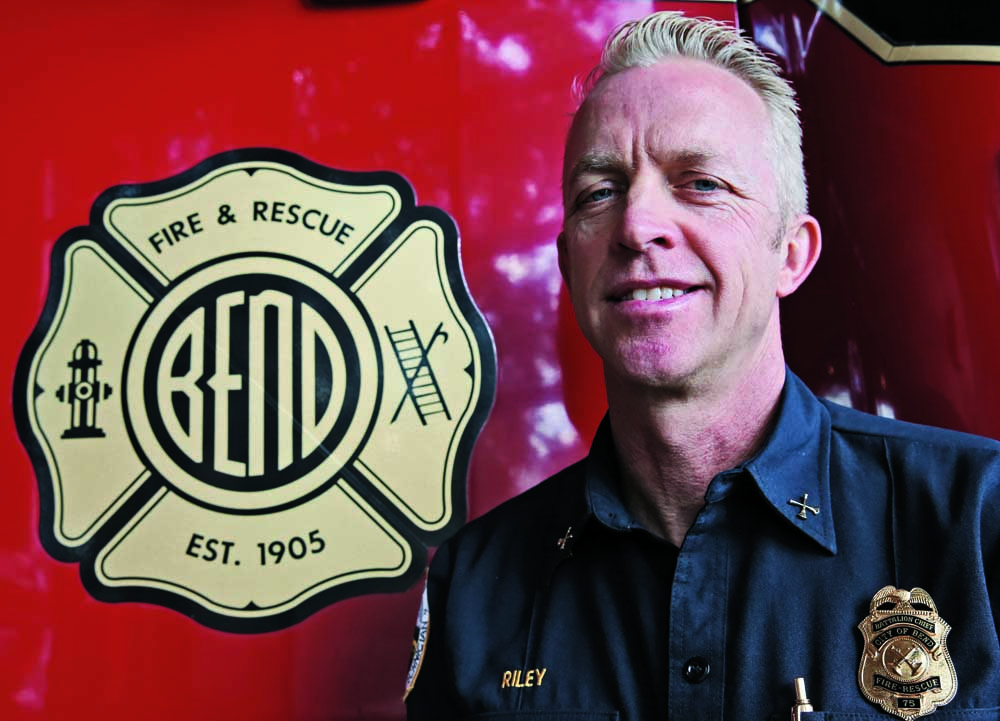Overhydration: It’s more common than you think
Published 12:00 am Thursday, July 23, 2015

- The Bulletin file photoLaurel Kent cools off with a drink of water during the Cascade Lakes Relay race August 4, 2012.
Liz Eisman was nervous before running her first marathon. She couldn’t eat much. Having heard for years about the dangers of dehydration, she guzzled lots of water before the race.
After taking off, 46-year-old Portland resident stopped at every water station she passed to gulp down more water. While she ran, she sipped from a water sack she carried on her back.
A half-hour after crossing the Portland Marathon finish line, she started feeling “twitchy,” like electrical impulses were misfiring throughout her body. She also became confused, unable to remember who had the keys she needed to get home. Once she finally got home — she and her then-boyfriend took a cab — she realized she had to go to the hospital.
“I knew something just wasn’t right,” she said. “I wasn’t quite right in my mind, and I had this weird kind of twitchy feeling in my body.”
Health care providers first told her it was a panic attack. It took between one and two hours, Eisman recalls, before they finally tested her blood and discovered her sodium was dangerously low. It wasn’t long after receiving an IV filled with a sodium concentrate that she recovered and finally learned what had happened: She had been overhydrated.
“I was clueless,” she said. “I could not believe that. I just thought you would have to drink so much water — it never occurred to me.”
In an era when marathons and triathlons are no longer reserved for elite athletes, exercise experts say overhydration has become a serious concern. The age-old lesson about drinking water to prevent dehydration is still crucial, but some athletes — especially newbies testing their limits — tend not to think about the flip side of that.
“Now, in the medical tent, overhydration may be even more important than dehydration,” said Dr. Kerry Kuehl, a professor in Oregon Health & Science University’s School of Medicine and director of its Human Performance Laboratory.
Realizing this, a group of 17 doctors and scientists gathered to update the international recommendations around preventing and treating exercise-associated hyponatremia, or overhydration. The last update came in 2008, just a few years before the first recommendations were released.
‘Sporting has changed’
The deaths last year of two high school football players from overhydration — one in Georgia and the other in Mississippi — trigged an urgency for the group to release its report this month, said Tamara Hew-Butler, associate professor of exercise science at Oakland University in Rochester, Michigan, and the lead author of the recommendations.
The athlete in Georgia had been hospitalized for cramps and was told to keep drinking water. He drank seven gallons of water and had a sodium level of 122 when he died, Hew-Butler said.
“That was very, very tragic because it was very preventable,” she said.
The report identifies three groups of athletes who are most susceptible to overhydration: runners participating in 100-mile races, triathletes participating in Ironman competitions (a 2.4-mile swim, 112-mile bike ride and 26-mile run) and football players during their first week of training camp. And hot conditions, when they’re sweating more, makes it worse.
The long-standing guidelines about drinking lots of water before a person feels thirsty were written using studies performed on elite, male runners, Hew-Butler said. Today’s message about water consumption is the same despite marathon runners having a variety of experience levels.
“Sporting has changed,” she said. “We want to get a lot of recreational people out there, but I don’t think most of the people who are just average people who want to exercise know that drinking too much will kill you. So it’s a different population that we need to get pretty much from the ground level now.”
Let thirst be your guide
The group’s recommendations around drinking fluids are just as they’ve always been: Only when you feel thirsty.
Since everyone requires a different amount of water depending on their weight, athletic ability and the environmental conditions, it’s impossible to say how much water the average person should drink, Hew-Butler said. She stresses trusting the body’s thirst mechanism. The human body has evolved to be able to regulate crucial factors like glucose, sodium and temperature on its own, Hew-Butler said.
OHSU’s Kuehl emphasized that using the thirsty rule is important, especially for novice athletes.
“For the elite athlete, it’s a different ballgame,” he said.
Bend resident Cherie Touchette, a personal trainer and marathon coach who has completed 11 Ironman competitions, thinks the thirsty rule is unreliable.
“Some peoples’ thirst mechanism is clearly broken,” she said. “I can have people go all day, and say: ‘Oh, I just wasn’t thirsty,’ and their lips are cracking. They have all the signs of dryness.”
Joe Padilla, Summit High School’s head football coach, said it’s rare that high school students drink too much water.
“Most of the time they’re not getting near enough,” he said.
During training in August, the players are wearing helmets and shoulder pads in the midday heat. Padilla sometimes tells them to drink water even if they don’t feel thirsty because of the danger of dehydration.
Chicken soup for the sodium
Most cases of overhydration are asymptomatic, and correct themselves without people ever realizing what happened, health professionals say. Hew-Butler and a team of researchers once studied athletes in an ultra marathon and found roughly half to be overhydrated, although they didn’t show any symptoms. Nearly 70 percent of rowers tested in the study were overhydrated. During one marathon, about 13 percent of the athletes had drank too many fluids.
In the rare event it gets more serious and shows symptoms, overhydration can be difficult to detect because the symptoms are similar to dehydration: dizziness, confusion, weakness and headaches.
That’s when weight becomes important, Kuehl said. During football practices and races, he has athletes weigh themselves before engaging in the activity and again afterward. A dehydrated person will have lost 2 or 3 pounds, while an overhydrated person will not have lost any weight, and may even have gained a little, he said.
More serious cases of overhydration will bring nausea and vomiting clear liquid (which dehydration can also cause). Untreated, it leads to seizures, brain swelling, coma and death.
Patients hospitalized for overhydration tend to turn around quickly once they’re given an IV of hypertonic concentration of sodium chloride, Kuehl said.
The new recommendations also say patients can be given sodium concentrates orally if their symptoms aren’t as severe. That can be done on the sidelines of a race or football practice before they’re taken to a hospital, Hew-Butler said. While IV fluids will come from a medication, the oral concentrations should just be a salty chicken broth or potato chips, she said.
“If they can tolerate that, it’s effective,” she said.
Chicken broth is usually served along the courses and at the finish lines at Ironman competitions.
“Last Ironman I did, I was having an awful run until I downed a whole bunch of chicken broth and then I started feeling better,” Touchette said. “Imagine that.”
‘They really missed it’
Eisman’s bout of overhydration was more than 15 years ago — before the first international recommendations around overhydration came out — so awareness likely has improved since then.
But at the time, Eisman said it seemed “incredible” that despite multiple people telling medical staff she had just run a marathon, overhydration was overlooked.
“They really missed it,” she said.
Dr. Bill Reed, an emergency physician at St. Charles Bend, said he’s seen only two cases of exercise-associated hyponatremia in the ER, both related to athletic events.
The first thing emergency room doctors look for in patients with altered mental states tends to be a stroke or a high or low blood sugar, he said. But if those patients just participated in a sporting event, the possibility of overhydration moves way up the list.
St. Charles uses an i-STAT machine to check electrolyte levels, which requires a drop of blood on a strip of paper and will provide a patient’s sodium and potassium levels within one minute, Reed said.
“You can get it there, on the spot,” he said.
Those machines cost in the neighborhood of $10,000, so they’re only in research labs and larger hospitals, Hew-Butler said. They typically won’t be on the sidelines at high school football games or at marathons, she said.
The group behind the new recommendations wants to use them as an educational campaign about overhydration for marathon organizers and team physicians, Hew-Butler said. One of the recommendations is to space out the water stations at marathons and triathlons — one every 3 miles instead of one every mile, as it is in some races. At the Portland Marathon, water stations are spaced out so that they’re less then 2 miles apart, according to the race’s website.
Water stations aren’t bad things, but people tend to see them and think they need to drink more, Hew-Butler said.
“Everyone is so scared about being dehydrated, and then you have these stations that are every mile, you think, ‘Well, it’s there, maybe I need to drink,’” she said.
At the same time, “It’s not like we don’t need water. We definitely need water,” she said, but balance is key.
— Reporter: 541-383-0304,
tbannow@bendbulletin.com







